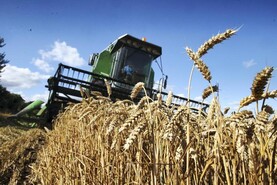I had not realised until last week that for 2020, 40% of US farm income came from direct government payments.
We are accustomed to thinking that the US is a country of small government and independent resilient farmers.
While that image may suit the public image, it’s very far from reality. The implications for Irish and European agriculture are profound.
Most of the US aid to agriculture goes on supports to grain production, though the dairy market has a complex support structure in its own right. But major support to US grain has significant effects in reducing the price of producing US grain and with it, beef, pigmeat as well as dairy products.
Inevitably, the prices go down
If it was simply to supply the internal US market the effects on us would be limited but with US exports to world markets especially of grain but also increasingly of meat and dairy products rising, the world price is held artificially low and the internal EU prices are reduced.
Inevitably, the prices go down and with European producers deprived of hormones for beef and pigmeat and GM technology for feed grains and protein production, profits are even more squeezed.
The results are quite clear as EU farm incomes increasingly fall behind the rest of society. The trend will inevitably continue if the new Green Deal proposals go through unaltered as the Irish Farmers Journal has pointed out several times.
It’s clear that there is a market outside of Europe for high-quality European food and drink products
The income consequences for EU farmers have been done not by the European Commission but by the United States Department of Agriculture.
While there will be some tinkering around the edges these are more likely to add to the bureaucracy around farming rather than add significantly to farm incomes.
So what can be done? It’s clear that there is a market outside of Europe for high-quality European food and drink products but it is limited and there is limited spin-off to EU producers.
These markets are there because Europe’s high environmental production conditions appeal to well-off consumers but as Europe under the Green Deal Farm to Fork strategy increasingly goes down this route, it is hard to see any alternative to Europe increasingly insisting on third-country suppliers to the European market being subjected to the same production conditions as apply to European farmers.
This will do little for world prices but should help the internal European prices to more clearly reflect European costs of production. It’s clear that a continuation of European costs and world prices will simply continue present trends of relative farm incomes continuing to decline. There is no evidence that the policy push towards organic farming will counteract this trend.






 This is a subscriber-only article
This is a subscriber-only article










SHARING OPTIONS: